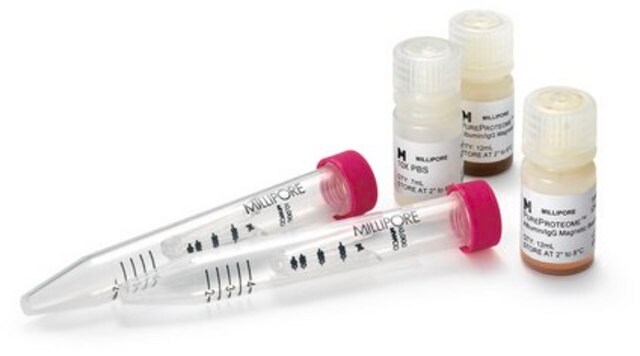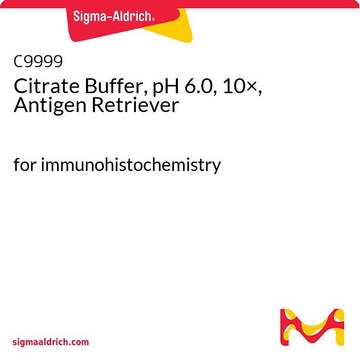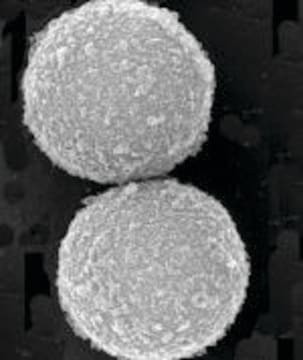13547
Diaion® CR11 Natrium-Form
pkg of 1000 g
Anmeldenzur Ansicht organisationsspezifischer und vertraglich vereinbarter Preise
Alle Fotos(1)
About This Item
UNSPSC-Code:
23151817
Empfohlene Produkte
Beschreibung
weakly acidic cation exchange resin
Qualitätsniveau
Form
beads
Verpackung
pkg of 1000 g
Parameter
120 °C Na+ form max. temp.
80 °C H+ form max. temp.
Feuchtigkeit
55-65%
Methode(n)
LPLC: suitable
Matrix
crosslinked polystyrene (highly porous)
Aktive Matrixgruppe
iminodiacetic acid functional group
Partikelgröße
16-45 mesh
Betriebs-pH-Wert
4-10
Kapazität
0.35 meq/mL by wetted bed volume (calcium)
1.2 meq/g by dry weight (calcium)
Trenntechnik
affinity
Allgemeine Beschreibung
Diaion CR11 is chelating resin with iminodiacetic acid groups. It is considered effective in the removal of chromium trivalent from aqueous solutions. This resin in the Na+ form at 50°C is seen to exhibit high sorption capacity.
Anwendung
Chelat bildendes Harz zur Metallrückgewinnung, Abwasserbehandlung, Salzwasserbehandlung, usw.
Diaion CR11 was used to prepare phosphate buffer, required to measure rate constants of the reactions of hypochlorite with L-Arg and taurine by stopped-flow spectrophotometry.
Rechtliche Hinweise
Diaion is a registered trademark of Mitsubishi Chemical Corp.
Lagerklassenschlüssel
11 - Combustible Solids
WGK
WGK 3
Flammpunkt (°F)
Not applicable
Flammpunkt (°C)
Not applicable
Persönliche Schutzausrüstung
Eyeshields, Gloves, type N95 (US)
Hier finden Sie alle aktuellen Versionen:
Besitzen Sie dieses Produkt bereits?
In der Dokumentenbibliothek finden Sie die Dokumentation zu den Produkten, die Sie kürzlich erworben haben.
Sofia A Cavaco et al.
Journal of hazardous materials, 144(3), 634-638 (2007-03-06)
Effluent discharged from the chromium electroplating industry contains a large number of metals, including chromium, copper, nickel, zinc, manganese and lead. The ion exchange process is an alternative technique for application in the treatment of industrial wastewater containing heavy metals
Sofia A Cavaco et al.
Journal of hazardous materials, 169(1-3), 516-523 (2009-05-02)
In this study two chelating resins containing iminodiacetic acid groups (Amberlite IRC 748 and Diaion CR 11) and a chelating resin based on sulfonic and diphosphonic acid groups (Diphonix) were investigated in order to separate Cr(III) from industrial effluents produced
C Zhang et al.
The Journal of biological chemistry, 276(29), 27159-27165 (2001-05-26)
The myeloperoxidase-derived oxidant hypochlorous acid (HOCl) is thought to contribute to endothelial dysfunction, but the mechanisms underlying this inhibitory effect are unknown. The present study tested the hypothesis that HOCl and L-arginine (L-Arg) react to form novel compounds that adversely
Unser Team von Wissenschaftlern verfügt über Erfahrung in allen Forschungsbereichen einschließlich Life Science, Materialwissenschaften, chemischer Synthese, Chromatographie, Analytik und vielen mehr..
Setzen Sie sich mit dem technischen Dienst in Verbindung.








